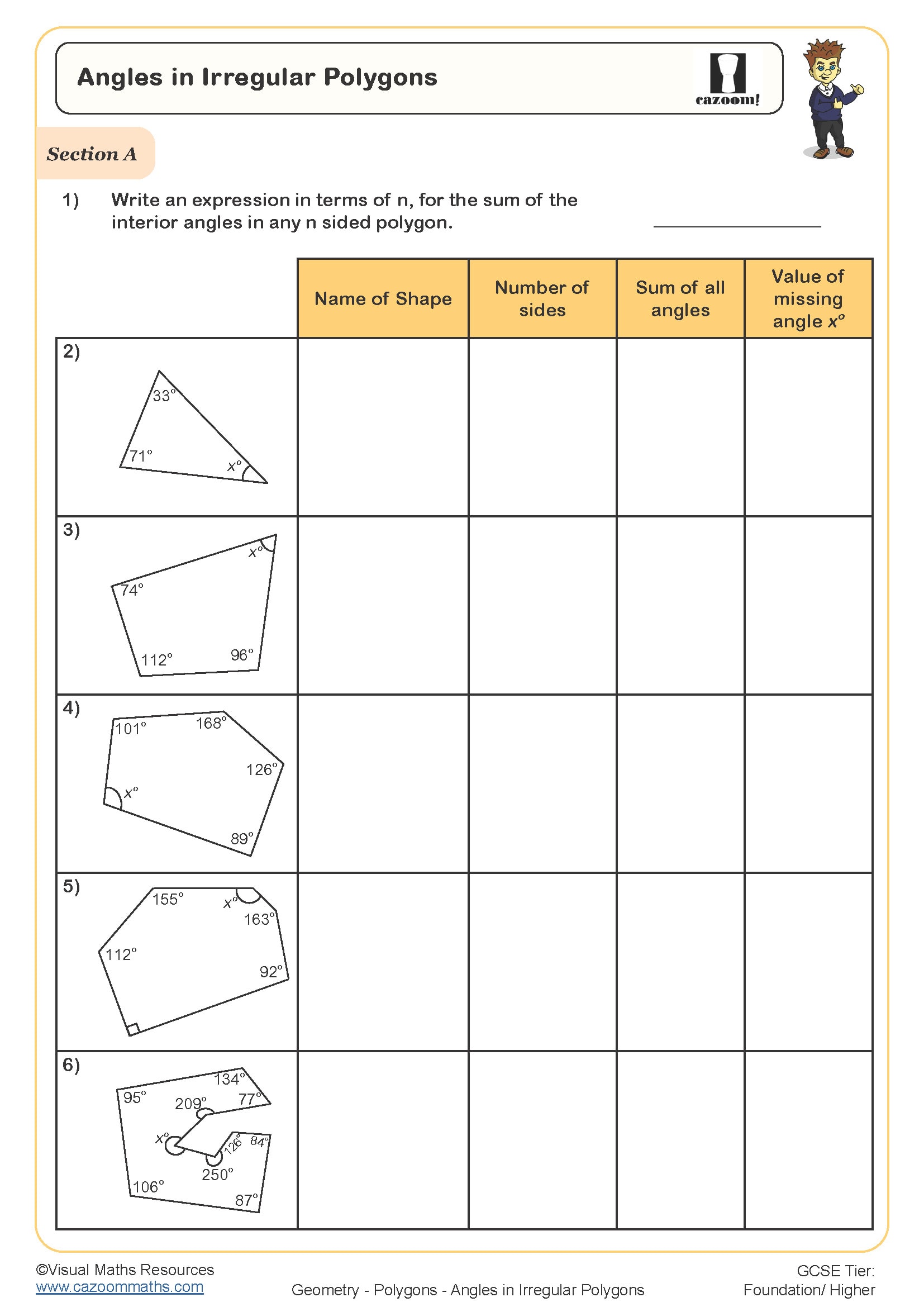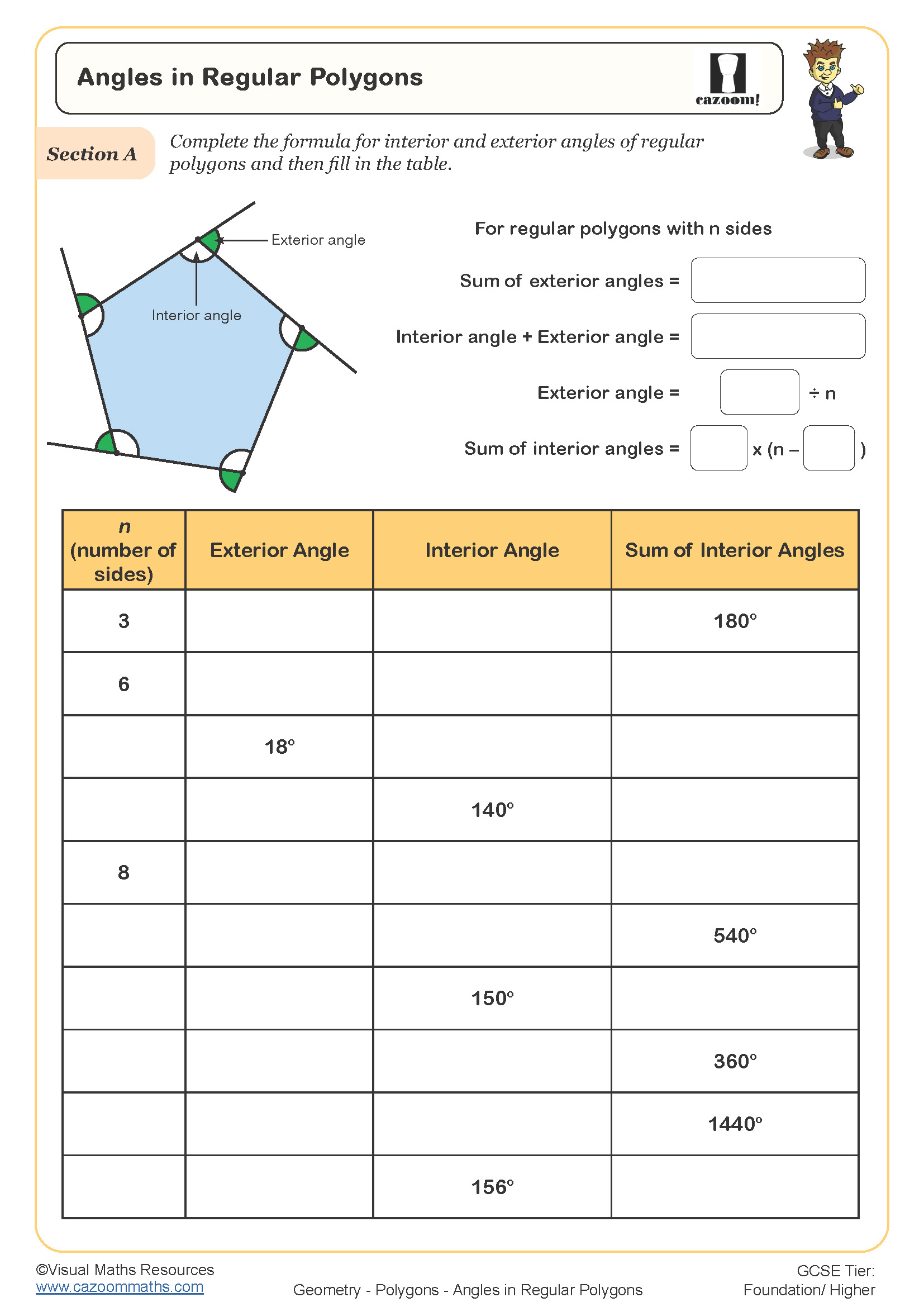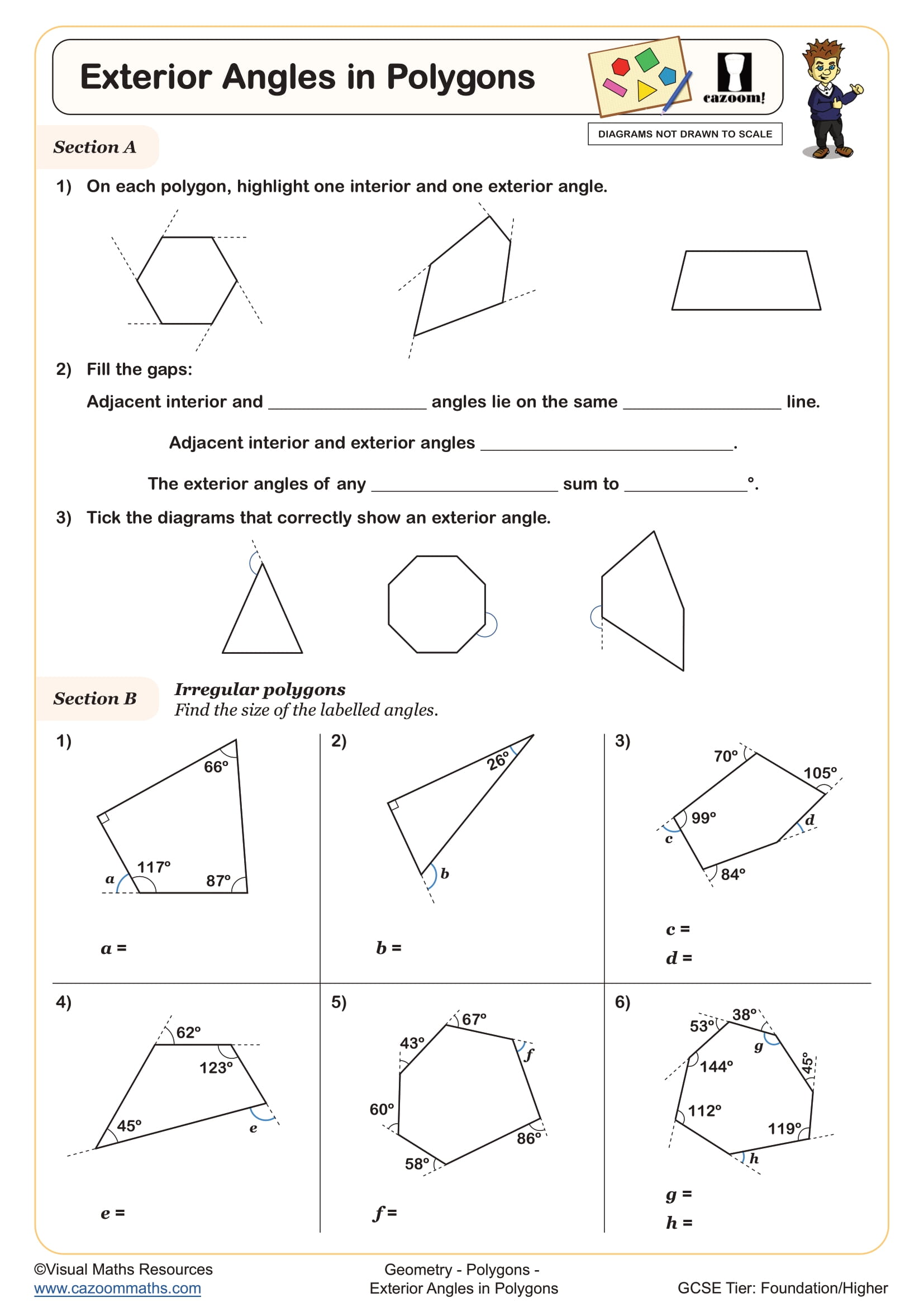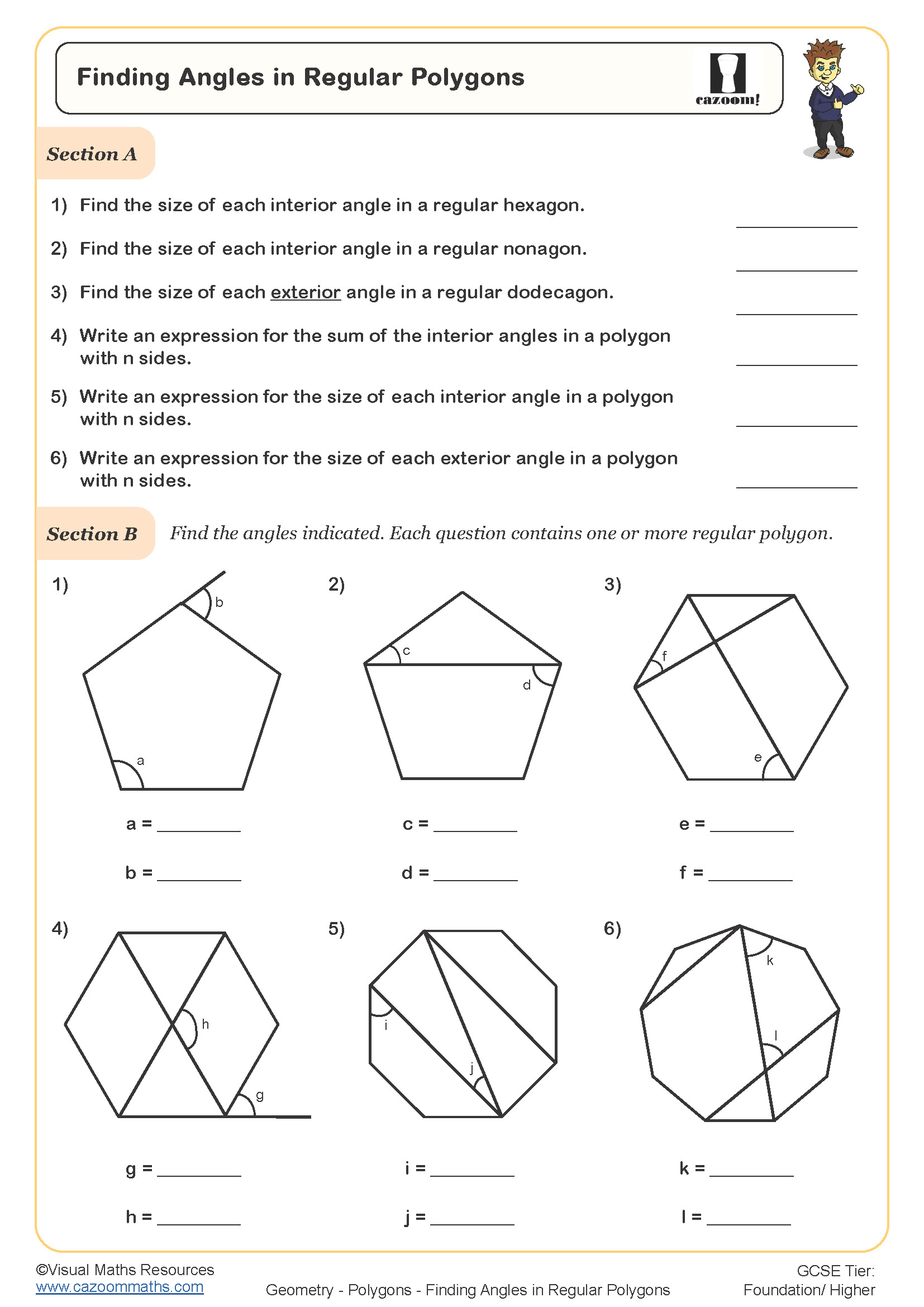Year 9 Polygons Worksheets
What Skills Do Year 9 Polygons Worksheets Really Teach?
Understanding polygons marks a significant leap in geometric thinking as Year 9 students transition from recognising simple shapes to understanding sophisticated angle relationships and algebraic reasoning. The worksheets serve to connect Year 8 students' basic geometry knowledge to the complex proof-based content of GCSE mathematics. The practice of polygon properties helps students build systematic thinking abilities, which become essential for advanced math subjects and strengthens their algebra skills through angle measurement. The method of structured progression enables students to fully understand each concept before advancing, which prevents knowledge gaps from forming and helps avoid future learning obstacles. The practice of worksheets regularly helps students develop the logical reasoning skills which are necessary for creating geometric proofs.
Specific learning benefits include:
• Master interior and exterior angle rules
• Develops geometric proof techniques
• Strengthens algebraic manipulation skills
• Builds spatial visualisation abilities
• Prepares for GCSE geometry topics
• Enhances problem-solving confidence
• Supports mathematical reasoning development
Which Polygon Skills Should Year 9 Pupils Master First?
Progressive learning moves from recognising polygon properties to calculating missing angles using algebraic methods, with each worksheet introducing increasingly complex problem-solving scenarios. The learning process begins with standard geometric shapes, which display obvious patterns, before students advance to irregular polygons that require strategic planning and methodical problem-solving. The collection teaches students to understand the basis of angle rules instead of memorising formulas because this approach leads to a complete understanding of geometric proofs. The presentation of worked solutions through multiple pathways enables students to understand that different valid methods exist for solving mathematical problems.
The worksheets in this collection include:
• Angles in Irregular Polygons — explores angle sum rules in asymmetric shapes, requiring creative problem-solving strategies.
• Angles in Regular Polygons — practice systematic calculation methods for equal-sided shapes with predictable patterns.
• Finding Angles in Regular Polygons — combines algebraic reasoning with geometric properties to solve complex angle problems.
Why Year 9 Polygons Worksheets Beat Textbook Exercises
Physical worksheets reveal student thinking through visible working that digital platforms often hide behind automated marking systems. Teachers can assess student understanding immediately by evaluating their handwritten assignments and geometric drawings, which students complete on paper. Students can freely annotate diagrams, sketch auxiliary lines and explore spatial relationships by directly handling the physical format. Teachers who detect student misconceptions quickly find differentiation easier because they can provide individualised feedback through direct assessment of student work assignments. The practice materials in worksheet collections enable students to practice for longer periods because they contain exercises that maintain a consistent difficulty level. The portable format enables all students to access high-quality materials because it eliminates digital access restrictions to educational content. The answer keys of Cazoom Maths worksheets present detailed step-by-step solutions that demonstrate proper mathematical argument structure to students.
Everyday Maths: Where Year 9 Students Use Polygons in Real Life
Polygon knowledge extends far beyond classroom walls into architecture, engineering, and creative industries. Students unknowingly apply these geometric principles daily when navigating spaces or appreciating design patterns around them.
• Architecture relies on polygon tessellation for floor plans
• Computer graphics render 3D models using polygon meshes
• Engineering determines how stress spreads through polygonal structures.
• The correct installation of sports field markings depends on following precise geometric standards.
• The design basis of art installations relies on polygonal symmetry patterns.
• Navigation apps use polygons to determine the most efficient routes that link various locations within their defined areas.
• The process of game development depends on polygon boundary collision detection.
• The design of packages achieves maximum material efficiency through polygon net structures.



